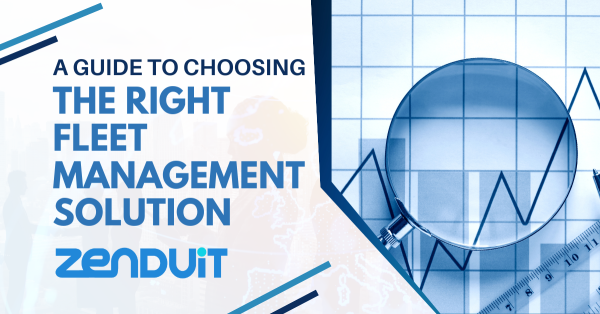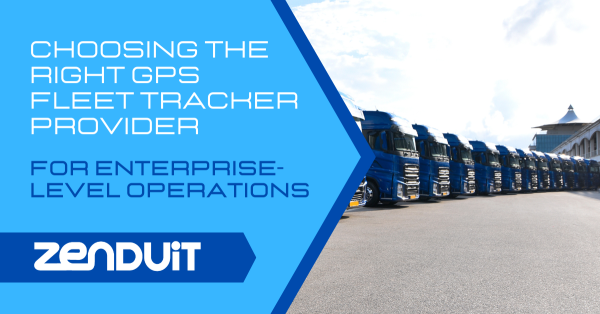Enterprise Fleet Tracking Best Practices: Lessons from Industry Leaders
September 5, 2023Companies that rely on transportation as a core component of their operations require efficient fleet management to keep up in today’s fast-paced business landscape. The concept of enterprise fleet tracking has emerged as a game-changer in this arena, offering businesses a multitude of benefits.
Fleet tracking is a comprehensive system that uses technology to monitor and manage a company’s fleet of vehicles. This includes cars, trucks, vans, and even specialized equipment, depending on the nature of the business.
In this article, we’ll delve into the world of fleet tracking, exploring its significance and the best practices employed by industry leaders to maximize its potential.
The Importance of Fleet Tracking
Efficient fleet management has become the linchpin of success for businesses heavily reliant on transportation operations. In a world where every minute counts and cost-effectiveness is paramount, the significance of fleet tracking cannot be overstated. It serves as the compass guiding enterprises towards streamlined operations, enhanced safety, and improved productivity. Here’s why it matters:
1. Cost Reduction
One of the primary drivers for implementing fleet tracking is cost reduction. Businesses can optimize routes, reduce fuel consumption, and improve vehicle maintenance, resulting in significant savings. The ability to track fuel usage and identify inefficient driving habits allows companies to take corrective actions promptly.
2. Improved Safety
Fleet tracking also enhances safety. Real-time monitoring enables businesses to track driver behavior, ensuring compliance with safety protocols and reducing the risk of accidents. It provides a way to detect and address risky driving behaviors such as speeding, harsh braking, or erratic lane changes.
3. Enhanced Productivity
Efficiency and productivity are boosted through fleet tracking. Managers can allocate tasks more effectively, optimize routes to reduce idle time, and ensure timely deliveries. This results in better customer service and increased customer satisfaction, which can be a significant competitive advantage.

Key Fleet Tracking Technologies
To achieve these benefits, enterprises rely on a combination of cutting-edge technologies. Let’s explore the key technologies that power fleet tracking systems:
1. GPS Tracking
Global Positioning System (GPS) technology is the foundation of fleet tracking. GPS devices installed in vehicles transmit real-time location data to a central system, enabling managers to monitor vehicle positions accurately.
2. Telematics
Telematics goes beyond location tracking. It collects and analyzes data related to vehicle performance, such as engine diagnostics, fuel consumption, and driver behavior. This data provides insights into the overall health and efficiency of the fleet.
3. Sensors
Sensors, including temperature and humidity sensors, are crucial for industries like logistics and pharmaceuticals. They help maintain the integrity of goods during transportation by providing real-time environmental data inside cargo spaces.
4. Data Analytics
Data analytics is the backbone of fleet tracking systems. Advanced analytics tools process the data collected from GPS, telematics, and sensors. This data is transformed into actionable insights, allowing businesses to make informed decisions.
These technologies work in harmony, offering a comprehensive view of the fleet’s performance and enabling businesses to take proactive measures.

Best Practices in Fleet Tracking
Industry leaders have honed their fleet tracking strategies over time, leading to the development of best practices that set them apart. Let’s explore these practices and their impact on fleet management:
1. Real-time Tracking and Monitoring
Real-time tracking provides managers with up-to-the-minute information about vehicle locations. This enables quicker response times to unforeseen events, such as traffic delays or route deviations, ensuring on-time deliveries and better customer satisfaction.
2. Maintenance Scheduling and Predictive Maintenance
Scheduled maintenance and predictive maintenance based on telematics data help prevent breakdowns and extend the lifespan of vehicles. By addressing maintenance needs proactively, companies reduce downtime and repair costs.
3. Driver Behavior Monitoring
Monitoring driver behavior encourages safe driving practices. It not only reduces accidents but also improves fuel efficiency by discouraging aggressive driving habits. Real-time alerts can be set up to notify managers of dangerous behavior.
4. Route Optimization
Optimizing routes minimizes fuel consumption, reduces travel time, and increases the number of stops a vehicle can make in a day. Advanced algorithms take into account traffic conditions, delivery windows, and vehicle capacities to find the most efficient routes.
5. Compliance with Regulations
Fleet tracking also assists in complying with various regulations, such as hours of service (HOS) regulations for trucking companies. Accurate record-keeping ensures that businesses avoid fines and penalties.
Challenges and Solutions
Despite the numerous benefits of fleet tracking, challenges can arise. Common issues include data security, driver resistance to monitoring, and hardware or software problems. Here are solutions and strategies to address these challenges:
Data Security: To address data security concerns, businesses should implement robust encryption and access control measures. Regular security audits and employee training can help protect sensitive data.
Driver Resistance: Driver resistance can be mitigated through clear communication about the benefits of fleet tracking, focusing on safety, productivity, and potential incentives for good driving behavior.
Hardware/Software Issues: To prevent hardware or software issues, choose reputable vendors and regularly update software and firmware. Implementing a maintenance schedule for hardware can also prevent unexpected failures.
Cost Considerations
Implementing fleet tracking solutions involves costs, but the return on investment (ROI) often justifies the expenditure. Here’s a breakdown of cost considerations:
Initial Setup Costs: These include the purchase of hardware, software, and installation. While the initial investment can be substantial, it is typically recouped through savings in fuel, maintenance, and improved efficiency.
Subscription Fees: Many fleet tracking solutions involve ongoing subscription fees for access to real-time data and support services. Businesses should evaluate the cost-effectiveness of these subscriptions based on their needs.

Future Trends in Fleet Tracking
As technology continues to evolve, so too does the fleet tracking industry. Emerging trends are reshaping the future of fleet management, introducing innovations that hold the potential to transform the way businesses oversee their mobile assets. As technology paves the way for new possibilities, understanding the significance of fleet tracking becomes even more crucial:
AI and Machine Learning
Artificial Intelligence (AI) and machine learning are at the forefront of the fleet tracking industry’s transformation. These technologies are not just about data collection; they are about making sense of the vast amounts of data generated by modern fleets.
AI-powered algorithms analyze historical maintenance data, vehicle performance metrics, and environmental factors to predict maintenance needs accurately. By foreseeing issues before they become critical, businesses can schedule maintenance proactively, reducing downtime and costly breakdowns.
Additionally, AI-driven route optimization is a game-changer. It continuously evaluates real-time traffic data and factors in variables like delivery windows and vehicle capacities to ensure the most efficient routes, saving both time and fuel costs.
Moreover, AI is employed to analyze driver behavior patterns, enabling companies to pinpoint areas where safety and efficiency can be improved. It identifies trends such as aggressive driving or frequent harsh braking, allowing for targeted driver training and improved risk assessment.
IoT Integration
The Internet of Things (IoT) has ushered in a new era of fleet tracking by interconnecting vehicles with a network of sensors and devices. This integration provides an unprecedented wealth of real-time data for analysis, going far beyond traditional tracking systems. IoT sensors can monitor not only vehicle location but also environmental conditions within cargo spaces.
For instance, temperature and humidity sensors ensure that goods sensitive to climate conditions remain intact during transport. Vehicle health monitoring systems are equipped with IoT sensors that continuously transmit data on engine performance, fuel consumption, and tire pressure. This real-time data empowers businesses to make informed decisions about maintenance, reduce fuel costs, and optimize routes based on changing conditions.
Furthermore, IoT integration extends to driver wearable devices that monitor vital signs, alertness, and fatigue levels, enhancing safety and compliance with regulations.
Automation
Automation is the “driving” force behind a seismic shift in the fleet tracking industry. Self-driving vehicles, once a concept of the future, are becoming a reality. These autonomous vehicles utilize advanced sensors, cameras, and AI algorithms to navigate and make decisions without human intervention. While full automation is still in its infancy and faces regulatory challenges, it holds the promise of improving safety, reducing labor costs, and increasing efficiency.
Beyond self-driving vehicles, automation extends to route planning and scheduling. Advanced automation systems can dynamically adjust routes in real-time based on traffic, weather, and delivery priorities. This reduces the need for human intervention and ensures that vehicles always take the most efficient path.
Automation also includes the integration of robotic systems for tasks such as loading and unloading cargo, further streamlining operations and minimizing manual labor. These developments mark a new era in fleet management, where automation takes center stage in optimizing performance and reducing operational costs.
Final Thoughts
In a world where time and efficiency are of the essence, adopting fleet tracking best practices is no longer an option but a necessity for businesses. The benefits of cost reduction, improved safety, and enhanced productivity are too compelling to ignore. To stay competitive, enterprises must embrace these technologies and strategies, ensuring their fleets run smoothly and profitably in the years to come.
So, don’t wait—take the first step toward optimizing your fleet management by contacting us today. Your bottom line will thank you, and your customers will notice the difference.

